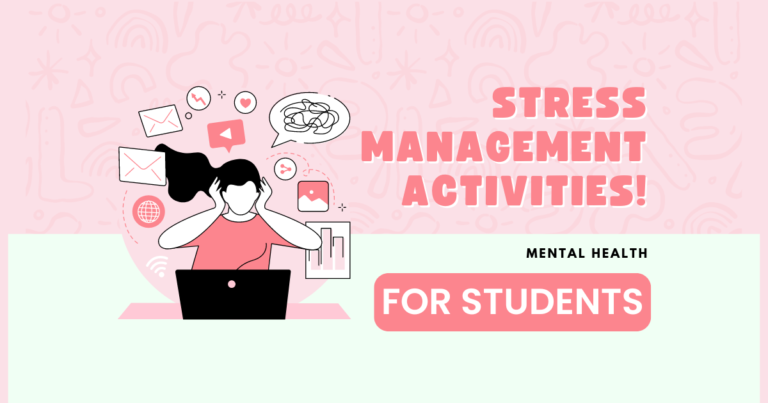What Is Backwards Law: Exploring the Law of Reversed Effort
In psychology and human performance, there’s an interesting idea called the Backwards Law, also known as the Law of Reversed Effort. This concept changes how we usually think about effort and success. Instead of believing that trying harder always leads to better results, the Backwards Law shows that putting in too much effort can actually hold us back from reaching our goals.
The idea behind the Backwards Law was popularized by philosopher Alan Watts. He explained that when people push too hard for things like success, happiness, or even relaxation, they often experience the exact opposite—failure, stress, or tension. Instead of getting what they want, their intense effort makes the goal feel further out of reach.

This idea can be seen in many areas of life, like sports and personal relationships. For instance, athletes tend to perform better when they stop overthinking and let their instincts take over. Similarly, in personal growth, people who let go of the need to control everything often find more happiness and success.
The Backwards Law teaches us that sometimes, doing less can lead to more. Instead of constantly striving and trying to control everything, we can achieve more by trusting the process and allowing things to unfold naturally.
Table of Contents
What Is Backwards Law
The Backwards Law suggests a surprising idea: when we try really hard to achieve something, our natural reactions can become less effective. This unusual concept applies to many areas of life, like sports, arts, and daily situations.
In everyday life, the Backwards Law can help with managing stress and relationships. If we worry too much about making a good impression or controlling situations, we might unintentionally push others away or complicate things. However, if we adopt a more relaxed attitude and remain open to whatever happens, we can build better connections and handle challenges more effectively.
Understanding the Law of Reversed Effort

The Law of Reversed Effort is an interesting idea that looks at how our conscious efforts and subconscious actions work together. When people focus too much on controlling everything they do, especially in situations where their body knows what to do naturally, they often don’t perform as well.
Key Points of the Law
Conscious Effort vs. Subconscious Response: The main idea of the Law of Reversed Effort is that when we try too hard to control our actions, we can mess up our body’s natural responses. Instead of getting better results, we might make things harder for ourselves.
Examples in Different Areas: You can see this law in many areas of life. In sports, athletes do better when they trust their instincts rather than overthinking every move. Artists also find that worrying too much about creating the perfect piece can block their creativity. In professional settings, like surgery, doctors who try too hard to control every detail may perform worse than those who trust their training and skills.
Role of Muscle Memory: To understand the Backwards Law better, it’s important to know about muscle memory. When we practice something a lot, our bodies learn to do it automatically. For example, athletes train until their movements become second nature. But when we try too hard to control our actions, we can interrupt this automatic process, leading to mistakes or awkward movements.
Practical Applications of the Backwards Law

Understanding the Backwards Law is more than just a theory; it provides useful tips that can improve our performance and well-being. This idea shows that trying too hard can sometimes hold us back. To make the most of our subconscious mind, people can use a few simple strategies.
1. Trust Your Training and Processes
In sports and work, it’s really important to trust your training and the processes you’ve learned. Instead of trying to control every little action, focus on doing tasks naturally. This way, you can use muscle memory, which helps your body perform movements automatically without overthinking. Relying on this kind of instinct not only improves your performance but also allows you to feel more free and confident in what you do. When you believe in your training, you can pay attention to the bigger picture and adapt to changes easily, leading to better results and more satisfaction in your work or sport.
2. Foster a Mindset of Flow
Flow states are moments when you feel deeply focused and fully engaged in what you’re doing, and they relate closely to the ideas of the Backwards Law. This law suggests that the more you chase certain goals, the harder they are to reach. To find flow, it’s important to do activities and create environments that naturally encourage this feeling.
To achieve flow, choose tasks that match your skills while still being challenging enough to keep you interested. For example, things like painting, playing an instrument, or playing sports can help you get into flow when you’re both good at them and challenged just enough.
3. Embrace Mindfulness and Mental Agility
Practicing mindfulness helps people focus on the present and stay engaged in what they’re doing, which prevents overthinking. Mindfulness encourages us to pay full attention to the task at hand, reducing distractions and anxiety. By being aware of our thoughts and feelings without judging them, we can connect more deeply with our activities.
When we combine mindfulness with mental agility, we allow our thoughts to flow freely without being held back by strict rules. This flexibility creates a space for creativity, where we can explore new ideas and viewpoints.
4. Balance Effort with Surrender
The Backwards Law shows us how to balance effort and letting go, which is important for achieving success in different areas of life. While working hard is essential for reaching our goals, it’s also crucial to know when to relax and let our subconscious mind take over. This shift can help us discover hidden abilities and improve our performance.
Putting in effort is necessary for developing skills and facing challenges; it helps us move forward. However, trying to control everything can cause stress and anxiety, making it harder to be effective. Letting go doesn’t mean giving up; it means trusting the skills and instincts we’ve built through practice.
5. Foster a Growth Mindset
A growth mindset goes hand in hand with the ideas of the Backwards Law. This mindset means seeing challenges as chances to grow instead of obstacles. When you face difficulties, having a growth mindset helps you understand that overcoming them can lead to real personal and professional development.
Instead of being afraid of failure, you see it as a way to learn and improve. Believing in your ability to adapt and grow is key. When you accept that skills and intelligence can develop through hard work and effort, you open up to new possibilities.
6. Practice Visualization and Mental Rehearsal
Visualization and mental rehearsal are helpful techniques that relate to the Backwards Law. These methods involve imagining successful outcomes and practicing actions in your mind, which can prepare you for better performance.
When you visualize, you create a clear picture in your head of what you want to achieve, like winning a sports game, giving a great speech, or completing a challenging task. This process helps your mind become familiar with the experience you desire, reducing anxiety and boosting confidence.
7. Seek Feedback and Adaptation
Feedback is a key tool for following the Backwards Law. It helps you improve your performance and grow personally. To get the most out of feedback, actively ask for it from mentors, coworkers, or experts in your area. When you seek others’ opinions on your work, you can discover valuable insights that point out where you can improve.
It’s important to see feedback as a positive chance to learn, not as a criticism. Approach it with an open mind and be ready to make changes based on what you hear. When you let your mind take in this feedback, you can adjust your methods and strategies.
8. Cultivate Self-Compassion
Being kind to ourselves is very important when it comes to understanding the Backwards Law. This law shows that sometimes, the more we try to achieve something, the harder it can be. When we face challenges, it’s crucial to treat ourselves gently instead of being too hard on ourselves. Recognizing that everyone has flaws is key; these imperfections are part of our growth and learning.
Practicing self-kindness helps us build resilience and emotional health. When we experience setbacks, instead of feeling frustrated or wanting to quit, we can see that struggling is a normal part of improving. This way of thinking lets us celebrate even the small wins, making our journey more enjoyable.

In conclusion, the Backwards Law and its manifestation through the Law of Reversed Effort offer profound insights into human behavior and achievement. By acknowledging the power of the subconscious mind, trusting in training and processes, fostering flow states, practicing mindfulness, finding the right balance between effort and surrender, cultivating a growth mindset, utilizing visualization and mental rehearsal, seeking feedback and adaptation, and cultivating self-compassion, individuals can unlock new levels of success and fulfillment in their endeavors.
The Backwards Law challenges us to rethink our approach to effort, control, and performance, inviting us to embrace a more intuitive, holistic, and effective way of operating in various facets of life.
What is the Backwards Law?
The Backwards Law, or the Law of Reversed Effort, says that the harder you try to get something, the more difficult it becomes to achieve. When you want something too much or push too hard, you might end up getting the opposite result.
Where does the Backwards Law come from?
This idea was shared by philosopher Alan Watts. He explained that trying too hard to find success, happiness, or even calmness can actually lead to failure, stress, or tension.
How does the Backwards Law work in everyday life?
It can show up in different areas like goals, relationships, and mental health. For example, if you’re always chasing happiness or love, you might feel disappointed. But when you stop trying so hard, those things may come more easily.
Can the Backwards Law apply to work or being productive?
Yes, it can. Sometimes working too hard can make you feel burnt out or less productive. Taking it easy and not overdoing it might help you get more done.







